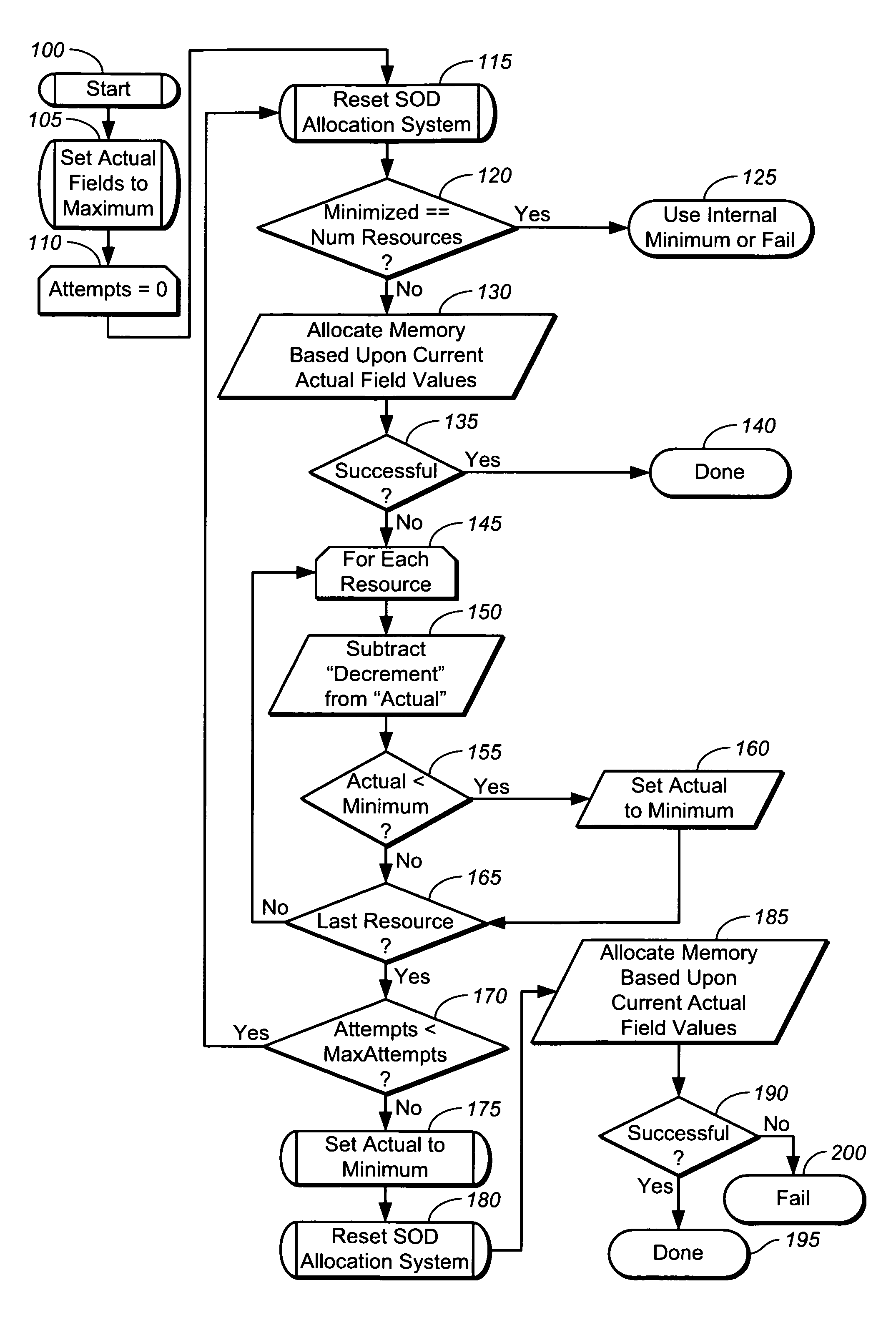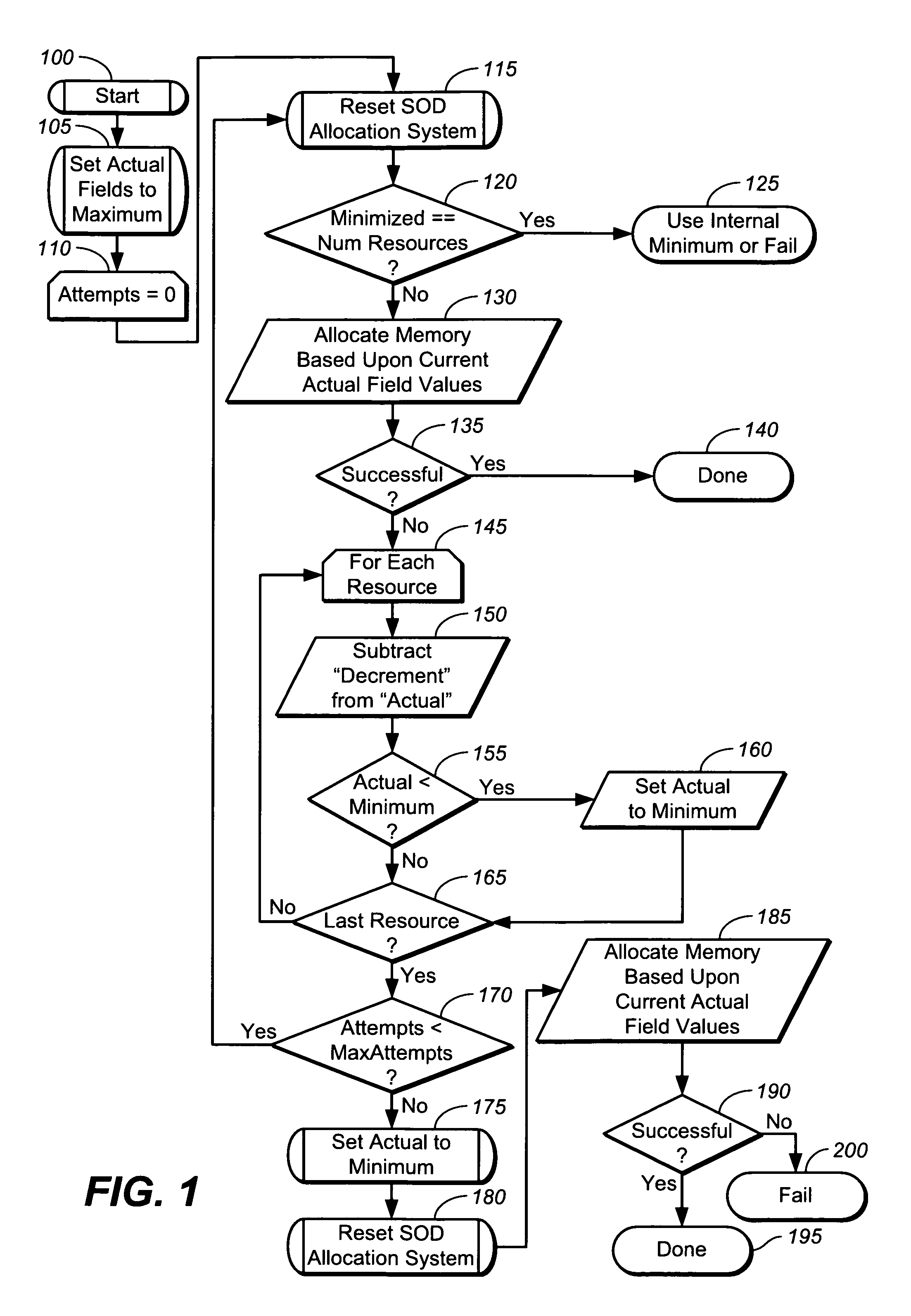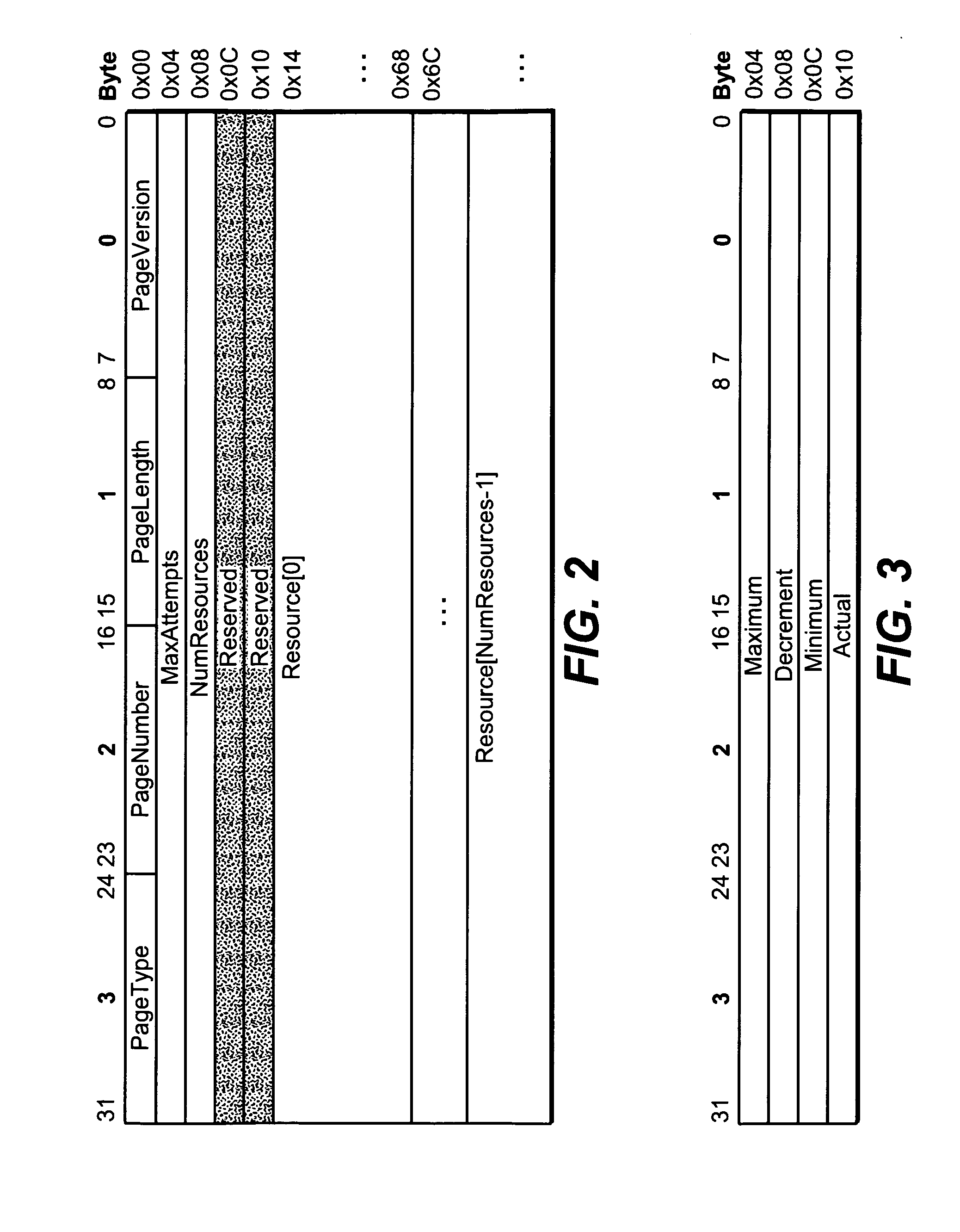System and method for optimal dynamic resource allocation in a storage system
a storage system and dynamic resource technology, applied in the field of systems, can solve the problems of not being programmable by the user, not being able to adapt to varying memory configuration and size, and affecting the release process
- Summary
- Abstract
- Description
- Claims
- Application Information
AI Technical Summary
Benefits of technology
Problems solved by technology
Method used
Image
Examples
Embodiment Construction
[0034]The present invention is preferably firmware running in a specialized integrated circuit or ASIC, which forms a storage controller (e.g., RAID controller, SCSI controller such as FC, iSCSI, SAS and the like), with the firmware written in the C language. However, any software tool may be employed to write and compile the present invention, which may be written in any computer language, including an object-oriented language like C++. Further, the firmware may be replaced by, and is synonymous with, any combination of hardware and / or software, such as a computer system, with the computer having primary and secondary memory storage. In general, depending on the language used to construct and implement the software of the present invention, any software used to construct the present invention may have, in source code or machine language, any number of classes, functions, subroutines, objects, variables, templates, module(s), lines of code, portions of code and constructs (collectiv...
PUM
 Login to View More
Login to View More Abstract
Description
Claims
Application Information
 Login to View More
Login to View More - R&D
- Intellectual Property
- Life Sciences
- Materials
- Tech Scout
- Unparalleled Data Quality
- Higher Quality Content
- 60% Fewer Hallucinations
Browse by: Latest US Patents, China's latest patents, Technical Efficacy Thesaurus, Application Domain, Technology Topic, Popular Technical Reports.
© 2025 PatSnap. All rights reserved.Legal|Privacy policy|Modern Slavery Act Transparency Statement|Sitemap|About US| Contact US: help@patsnap.com



